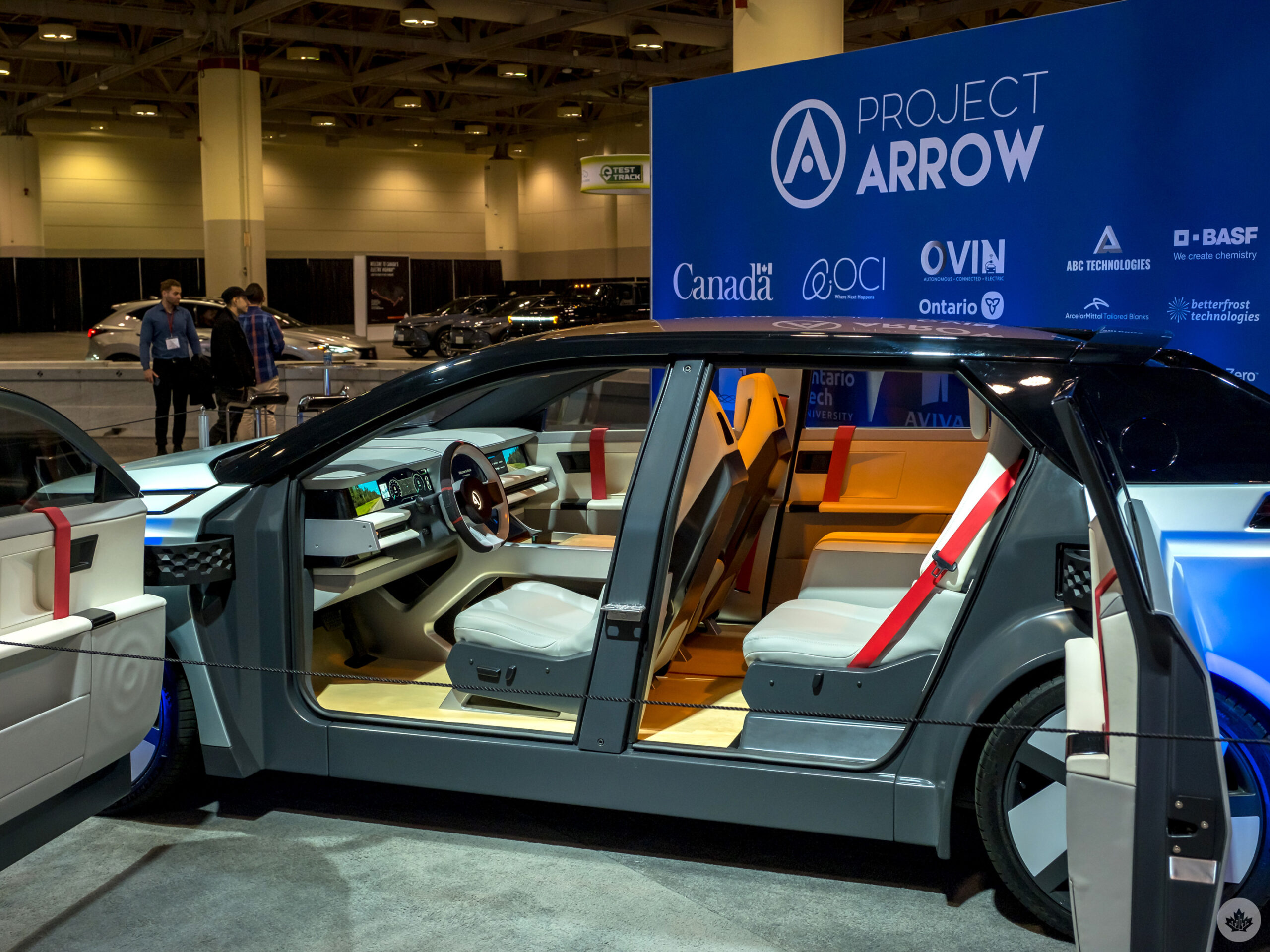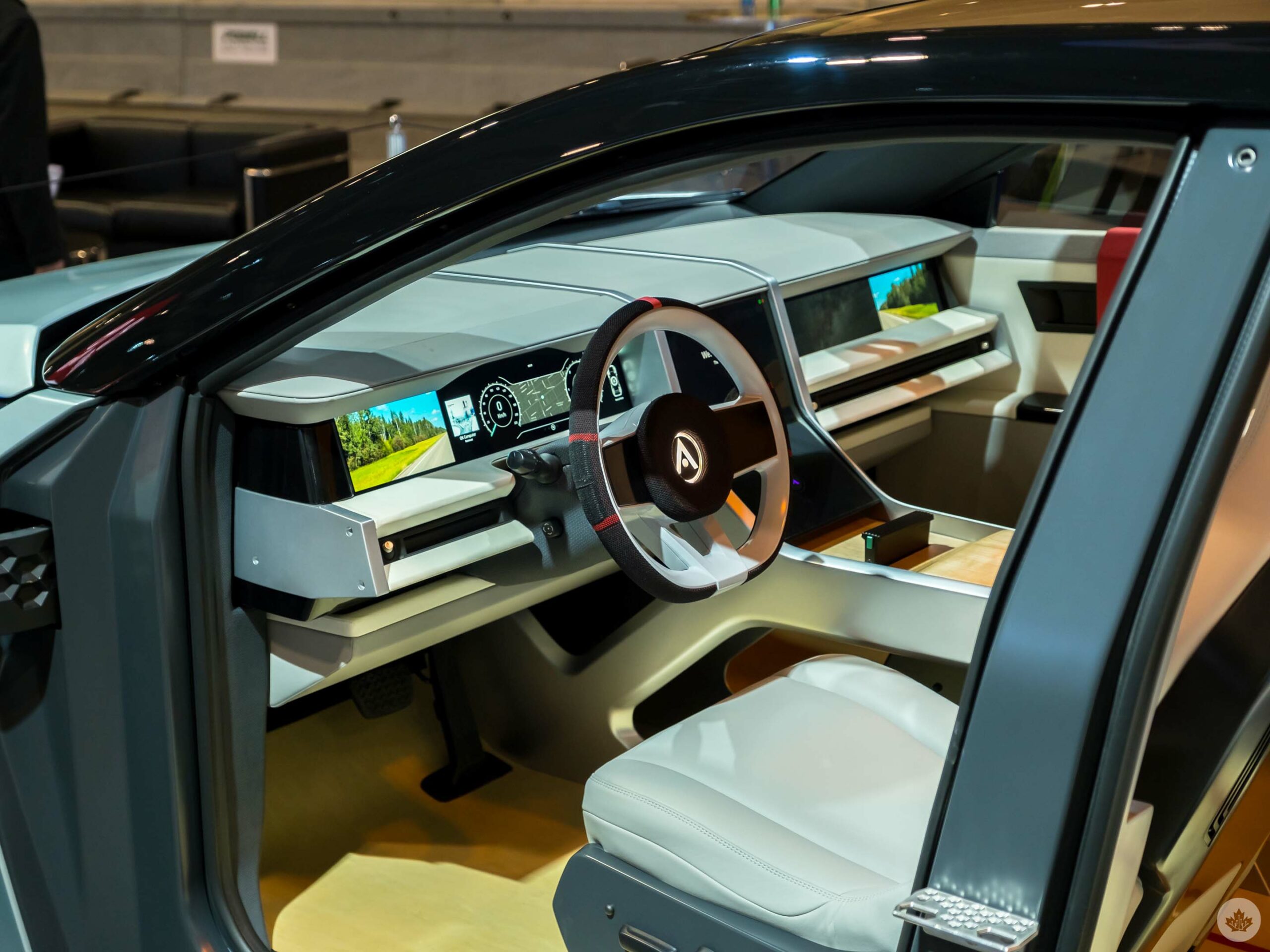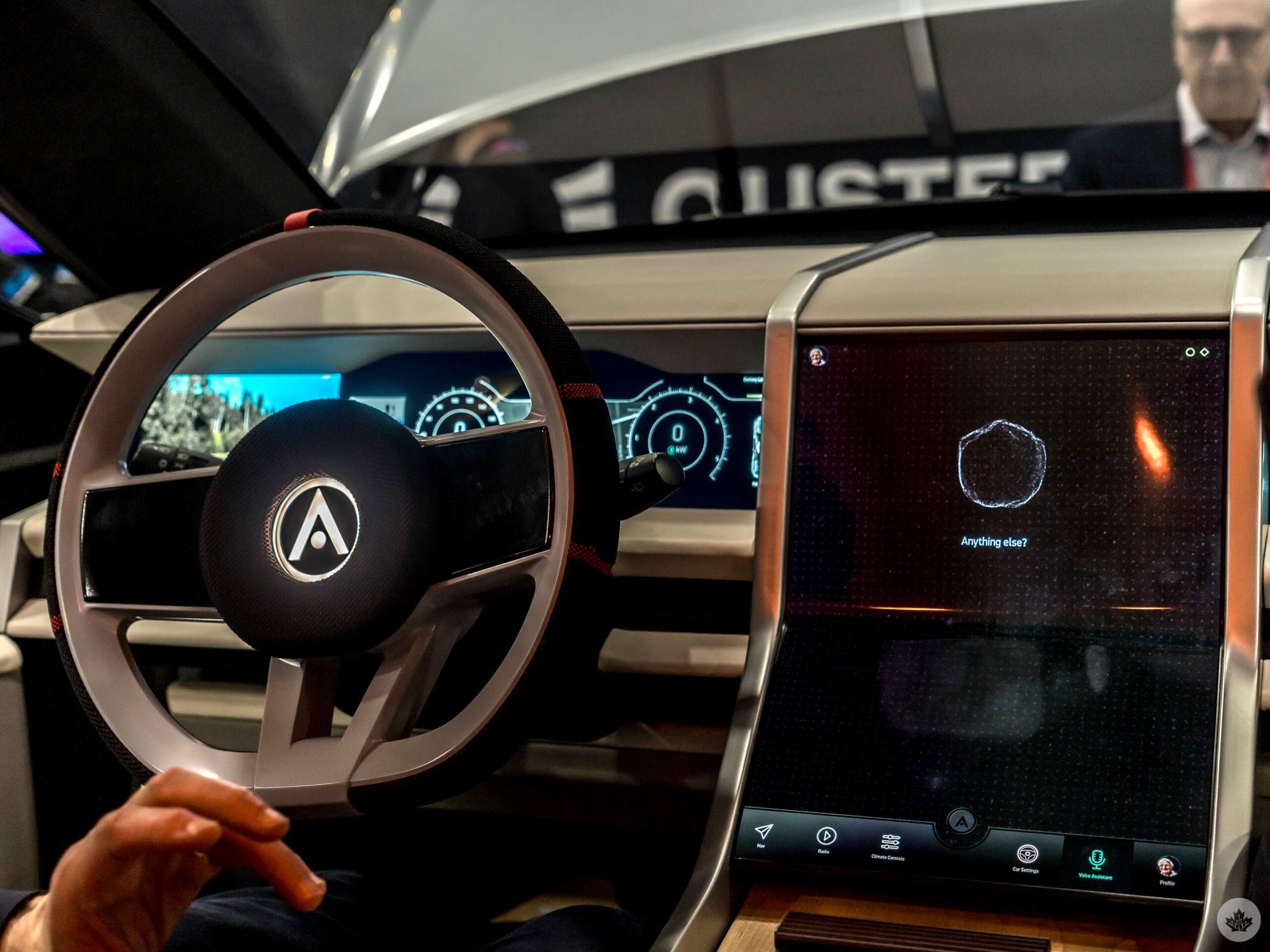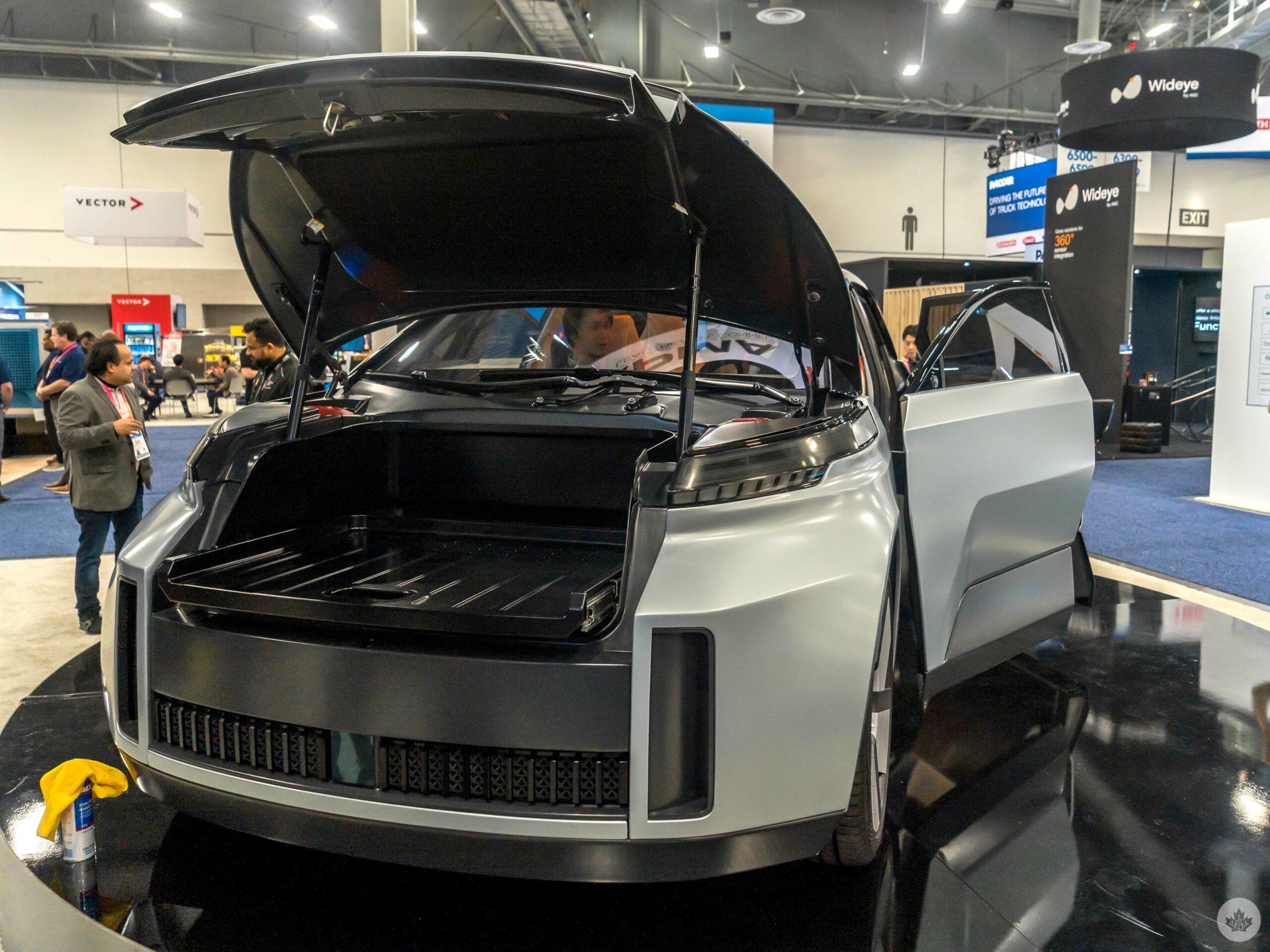
Canada has a concept electric vehicle (EV) in Project Arrow that is going on tour to showcase what the country’s manufacturers and suppliers can offer to the industry. After an unveiling at CES 2023 in Las Vegas in January, it’s now at the Canadian International AutoShow in Toronto.
The EV is the brainchild of the Automotive Parts Manufacturers’ Association (APMA) and a design competition won by four students at Carleton University’s School of Industrial Design in October 2020. From the design to the building phase, covered by over $8 million in funding from Ottawa and provincial coffers in Ontario and Quebec, the current build can not only drive, but also features its own take on certain technologies.
 At least 50 different Canadian manufacturers and suppliers were involved, though there are no plans to mass produce the Arrow anytime soon. For now, it’s a showpiece to drum up business for the auto industry’s transition to EVs.
At least 50 different Canadian manufacturers and suppliers were involved, though there are no plans to mass produce the Arrow anytime soon. For now, it’s a showpiece to drum up business for the auto industry’s transition to EVs.
What the Arrow is made of
While the Carleton students won the design contest, the engineering and building phases took place at Ontario Tech University in Oshawa, ON. That included crafting a full 3D model in virtual reality (VR) before sourcing the materials and parts necessary to build it by hand. The team that used their hands to do it were present to speak with the media on the eve of the AutoShow’s opening on Februrary 17th.
They described the challenge in making an EV that could drive lighter. EVs are, by the very nature of the batteries and metals needed to protect them, heavier than internal combustion vehicles. Throw in the powerful motors needed to propel one forward, and weight becomes an engineering challenge.
 That’s largely why Project Arrow is like a manufacturing concoction. There’s the 3D-printed chassis made from composite materials to act as both a sturdy and lighter frame. To improve aerodynamics, the team used carbon fibre panels and magnesium pillars. They even used hemp for the backs reinforcing the seats. Bio-composite materials are also included where possible.
That’s largely why Project Arrow is like a manufacturing concoction. There’s the 3D-printed chassis made from composite materials to act as both a sturdy and lighter frame. To improve aerodynamics, the team used carbon fibre panels and magnesium pillars. They even used hemp for the backs reinforcing the seats. Bio-composite materials are also included where possible.
Rather than have rearview mirrors, cameras stick out just a little bit on either side to project what they see onto screens on the dashboard. The sloped windshield takes a shallower curve, an EV trend that I’ve noticed in both concept and finished models.
Though interiors have less wiggle room to change things up, Project Arrow does try a few things. The wooden flooring is unusual, but it’s also a nod to Canada’s history with timber and basketball. That’s why there’s a red stripe running through it. Wood also makes up the centre console in another different take from the norm. Lighter faux fabrics are another attempt to lighten the load.
About the tech
It’s not clear what the prototype weighs, nor what its top speed is, as it’s considered a “work in progress” as far as efficiencies go. What is known is that it has two electric motors with all-wheel drive to pump out 550 horsepower. No wonder it can go from zero to 100 km/h in just 3.5 seconds. Onboard batteries give it a range of up to 500 km.
The roof is solar-powered and designed to assist the batteries in keeping the Arrow going. I didn’t get any numbers to quantify just how much that would be or whether the solar power kicks in when battery life begins to drop but they do work together. It emits an orange-y glow in the cabin, which to my eyes, simulates sunlight, but is actually more of an aesthetic touch. The light can be turned off and the roof is transparent enough to see through it.
 It also has Level 3 driver autonomy, which is currently not legal, but still interesting to note. Level 3 is a step above the semi-autonomous Level 2 in that the vehicle is smarter at assessing road conditions. For instance, rather than driving on set roads or sticking to a lane, the Arrow could presumably change lanes, merge into traffic and drive through gridlock without a driver taking over.
It also has Level 3 driver autonomy, which is currently not legal, but still interesting to note. Level 3 is a step above the semi-autonomous Level 2 in that the vehicle is smarter at assessing road conditions. For instance, rather than driving on set roads or sticking to a lane, the Arrow could presumably change lanes, merge into traffic and drive through gridlock without a driver taking over.
Sensors are also laid out throughout the interior to work with onboard artificial intelligence (AI) that could track certain biometrics. The designers had safety in mind, like steering wheel sensors to track heart rate and body temperature. If it detects elevated heart rates or stress, it could theoretically adjust settings inside to calm things down.
 The infotainment system uses an array of five screens running the gamut of the dash. The rearview camera screens are on the edges, while the digital cluster faces the driver, the main infotainment screen is in the middle and those riding shotgun get their own screen to control a limited set of features in the car or watch their own video content independent of the other screens.
The infotainment system uses an array of five screens running the gamut of the dash. The rearview camera screens are on the edges, while the digital cluster faces the driver, the main infotainment screen is in the middle and those riding shotgun get their own screen to control a limited set of features in the car or watch their own video content independent of the other screens.
Driving forward somewhere
Being the only prototype, the Arrow has never undergone any crash testing, but it did go through a rigorous battery of tests in the climatic aerodynamic wind tunnel at Ontario Tech’s Automotive Centre of Excellence (ACE). It’s a highly respected wind tunnel that’s often used by automakers and researchers to test their own products.
That respect is exactly what APMA is trying to achieve with Project Arrow. It’s too soon to say whether it will spark a movement to develop a homegrown automaker, but it is a rolling sample of what Canadian suppliers can do for others making EVs. Given the different parts and materials needed to make them, competition will be tight across the globe.
 After making its debut at CES, Project Arrow is going on tour at other shows taking place in Montreal, Detroit, Atlanta, San Antonio and Palo Alto throughout the year.
After making its debut at CES, Project Arrow is going on tour at other shows taking place in Montreal, Detroit, Atlanta, San Antonio and Palo Alto throughout the year.
MobileSyrup may earn a commission from purchases made via our links, which helps fund the journalism we provide free on our website. These links do not influence our editorial content. Support us here.


